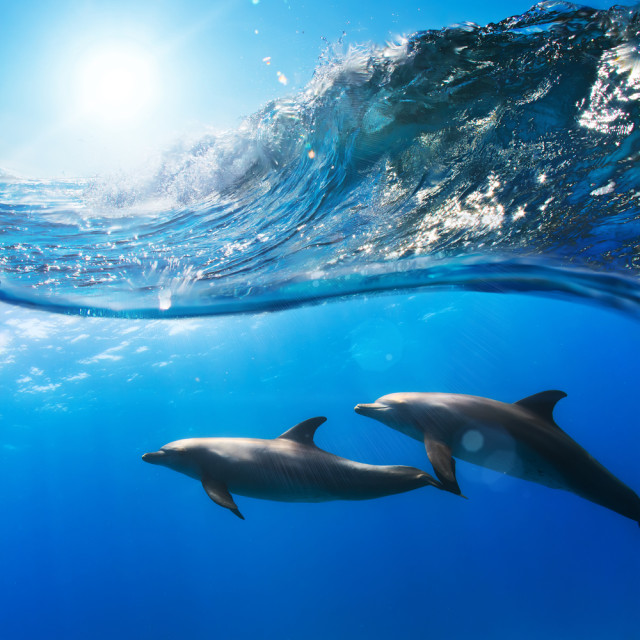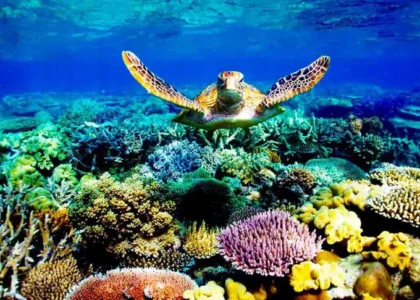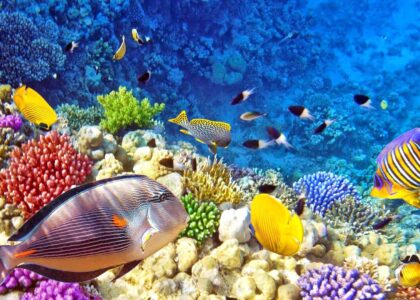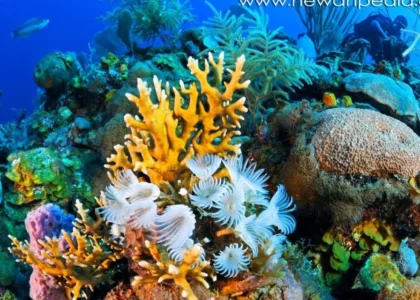
Connect To Sea – Dolphins are highly intelligent marine mammals that are seen as charismatic and beloved by humans. There are 40 dolphin species, grouped into six families. Six of these dolphin species are commonly—and mistakenly—referred to as whales, including the killer whale and the pilot whale.
Dolphins inhabit oceans and seas, as well as freshwater rivers and lakes worldwide. They are highly social animals, living in complex social groups known as pods. They engage in cooperative hunting, communicate through vocalizations and body language, and form strong social bonds within their pods.
As carnivorous apex predators, dolphins primarily feed on fish, squid, and occasionally crustaceans, using echolocation to locate and hunt their prey. These feeding habits help maintain ecological balance within the ocean’s ecosystem and regulate prey populations, preventing the overabundance of certain species.
Unfortunately, many dolphin species are endangered, with conservation organizations like IFAW working to protect these marine mammals and their habitats.
What is a dolphin’s scientific name?
Cetacea is the scientific name for dolphins, whales, and porpoises. The term ‘dolphin’ refers to any toothed whale belonging to the mammal family Delphinidae (oceanic dolphins), as well as river dolphins belonging to the Platanistidae and Iniidae families.
The scientific name for each dolphin varies depending on the species. Here are a few well-known dolphin species and their scientific names:
- Common bottlenose dolphins (Tursiops truncatus)
- Killer whales (Orcinus orca)
- Spinner dolphins (Stenella longirostris)
- Atlantic white-sided dolphins (Lagenorynchus acutus)
- Bottlenose dolphins (Tursiops truncatus)
Are dolphins endangered?
Depending on the species, dolphins’ conservation status ranges from least concern to critically endangered.
The Atlantic humpback dolphin is classed by the IUCN as critically endangered, with only an estimated 1,500 individuals left in the wild. Hector’s dolphin, which is endemic to New Zealand and the smallest marine dolphin in the world, is classed as endangered. The Irrawaddy dolphin, found in coastal Southeast Asia, and the freshwater Ganges river dolphin are also endangered, each with just a few thousand mature individuals left in the wild.
Where do dolphins live?
Dolphins live in a wide range of aquatic habitats, including both saltwater and freshwater environments. They’re highly adaptable animals, capable of living everywhere from tropical coral reefs to icy arctic waters, though the most recognizable species—the common and bottlenose dolphins—are found in warm, temperate waters.
While dolphins are well-adapted to life in the open ocean, they can thrive in coastal, shallow areas like bays and estuaries that are sheltered and have abundant food sources. Here, though, dolphins often come into contact with humans, which can threaten their survival. They can also become stranded if the water is too shallow.
While we tend to think of dolphins as sea animals, many coastal-dwelling dolphins spend a lot of time in freshwater, and river dolphins live exclusively in freshwater, thousands of kilometers from the ocean. In rare cases, dolphins have been found in freshwater lakes, such as the Irrawaddy dolphin in certain areas of Southeast Asia.




